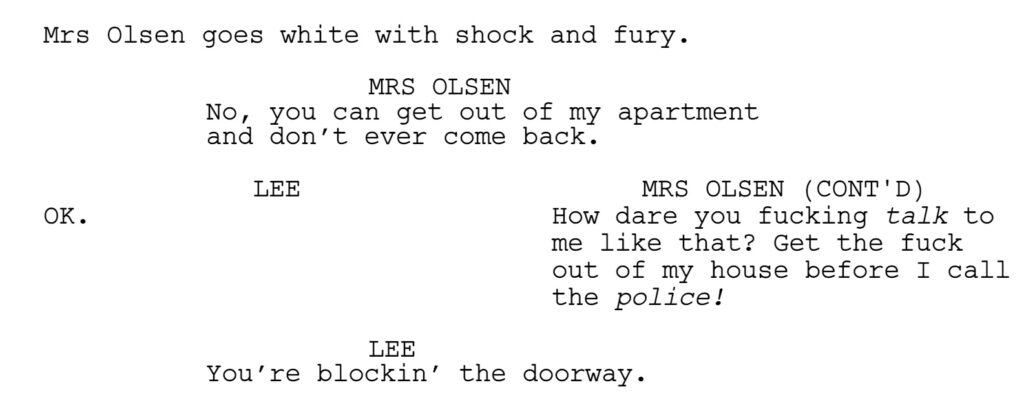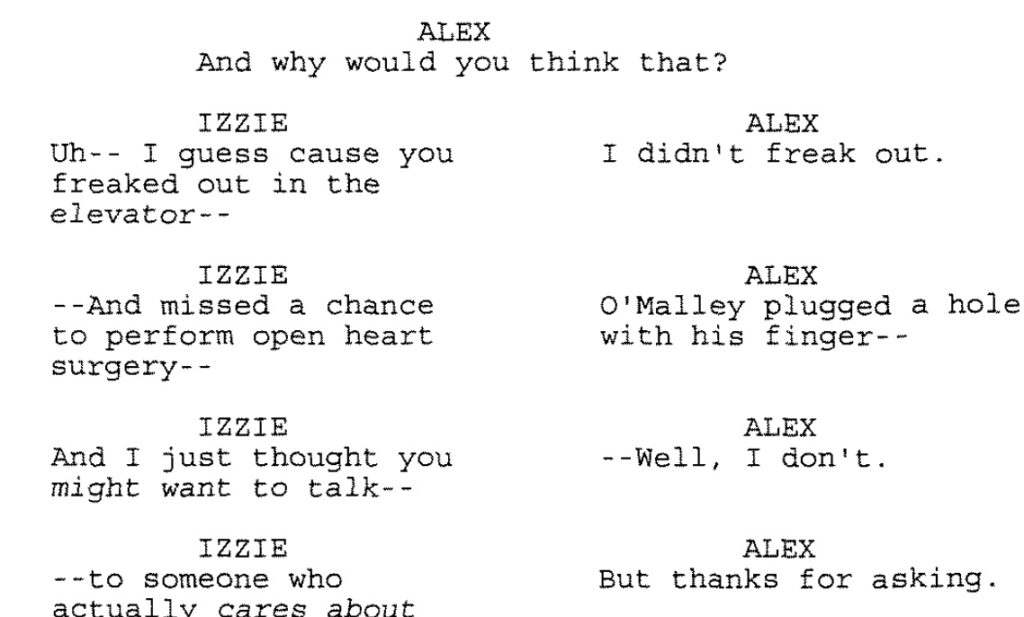Dual dialogue is a fun screenwriting technique. It’s easy, quick, and makes for a clean script. I’ve witnessed many bitter complaints about dual dialogue, always with the wild conclusion that all dual dialogue must be bad, and you should never, ever write it.
That, my friends, is a steaming pile of crap.
So, What IS Dual Dialogue?
It’s a two-column layout, like this:

As you can see from my quick and dirty screenshot, a third line is possible.
Isn’t that neat? Cool technique.
Cons
In screenwriting, it’s common for emerging screenwriters to misuse dual dialogue for a variety of reasons. Unaware that it suggests that one actor just waits for the other actor to finally stops talking. Too focused on page count instead of counting beats.
Or maybe, because I accidentally made this mistake when I first started writing scripts, thinking the automatic dual dialogue function in my screenwriting software magically formatted for me, when it doesn’t, at all.
One thing I’ve learned since I started in 2018 is that there’s no such thing as an element, style, or technique that’s wrong within itself. It’s not about what is used, it’s about how it’s used.
I guess my point is the only real con of dual dialogue is using it for the wrong reasons.
Pros
It’s useful for when characters who are talking over each other. More specifically, when the individual words don’t need to be understood, just blend with another character’s dialogue. Another useful technique is comedy, to deliver the punchline on the third line.
If you intend rapid-fire dialogue, dual dialogue is a fantastic way to achieve that.
Here are some examples from produced screenplays and scripts.

This is effectively shows how one character lectures and intimidates., while the other character only says one word.
In TV script writing, dialogue is written differently, mainly for pacing and conserving time. No one wants an hour-long network TV episode to run for two hours. So, dual dialogue to the rescue.
Check out this Grey’s Anatomy’s script, page 9.

This example maintains fast pacing. The key is interactive dialogue and distinctive personalities. I cannot emphasize that enough. The characters don’t just talk at the same time. They rapidly bounce dialogue off each other. Precise timing. It’s an art.
How to Write Dual Dialogue
Yay, you reached the end of this post!
I’ve written dual dialogue many times, and I’ve never had any complaints. So I pass on my approach to you.
I count syllables. Then, I make sure the syllables are balanced for each line, as per the conversation style I want to achieve. When, on occasion, the syllables are not balanced, then I don’t bother with dual dialogue. Sometimes it works, sometimes it doesn’t.
As always, find what works for you.

Do you have more pros and cons of dual dialogue? Let me know.
Views: 18
